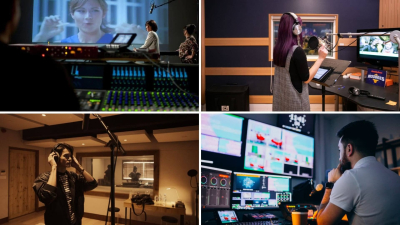Many of us watch foreign and other language movies or series in our own regional language and get the same feel as the original. These movies involve an intricate process called dubbing. Let us find out.
Dubbing is a post-production process of adding sound and dialogues into a media. It also involves replacing the original voice track with a synchronised translation in another language. Unlike voiceovers, dubbing is much more nuanced and complex. It is mostly done for movies and TV series, while it is also needed for animation movies, video games and music at times.
Dubbing helps in reaching a wider audience. It is categorised into three types namely lipsynced dubbing, time-synced dubbing and non-synced dubbing.
Origin of dubbing
With the invention of photograph (a device used to record sound), cinema began transitioning from the silent era to sound. Warner Bros. of Hollywood were pioneers who made new sound movies, called Vitaphone movies. These movies had a recording of an orchestra along with some sound effects that were synchronised perfectly with the moving images. Slowly ‘talkies’ were made, where movies incorporated dialogues as actors started talking to one another.
In 1930, a musical talkie by name ‘Applause’ was made by Rouben Mamoulian that first used dubbing. The director experimented the sound mixing by interlocking 35 mm audio tracks and began the dubbing practice. Eventually, more and more films started to record actors’ dialogue after shooting scenes, then synchronising the sound to the scene. When actor Louise Brooks refused to reshoot their silent scenes in the movie The Canary Murder Case’, the hiring of voice actors began.
Subs Vs Dubs
The debate on subtitles versus dubbing is still on. While there are people who don’t like subtitles due to their pace and complexity, dubbing is preferred as it adds more emotion. But the catch is that, the results of dubbing has to be natural and organic. If the audio is poorly mixed or if any actors’ accent is incomprehensible, subtitles come in handy. They can also be used by those with hearing difficulties.
Varied perspectives
Though dubbing allows for a deeper understanding and connection to the storyline, it is a time consuming and critical process for filmmakers. Some filmmakers have moved to sync sound which involves reconting the is sound while on the set to make the film more realistic This helped in reducing the post production cost and efforts. But filmmakers continued to rely on dubbing as it enhances the audio quality.
Picture Credit: Google





